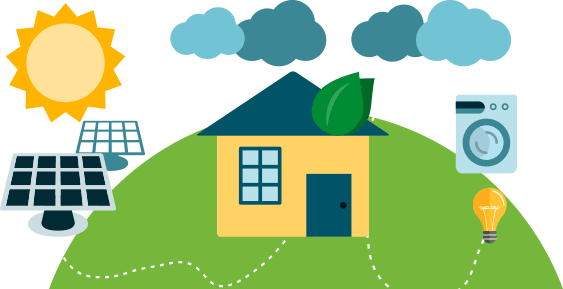

The Basics of Solar Solution
A large number of installations of residential solar power systems are deployed because it saves money over the years, provides a stable supply of electricity, and contributes to a cleaner environment. A number of factors that have led to the increase in its acceptance – improved technologies have lowered the cost of installations of residential solar power panels and the government is taking firm steps along with attractive schemes to ensure that solar panels become commonplace.
Solar panels are made up of cells called photovoltaic cells and the installation of the entire system is done on the rooftop of a home. The installers make sure that the placement of the system ensures that the module gets the maximum direct sunlight for as long as possible throughout the day. These cells trap the sunlight and convert them to electricity, which then goes to the inverter in the system which converts it into usable electricity to run appliances at home – in case of battery based systems. The great part of installing solar systems is that it pays for itself over a short period, improves the quality of air, increases the value of the home, gains incentives from the government & requires little or no maintenance. One just needs to put an effort to keep the panels clean in order to ensure maximum generation.
Homeowners can choose their solar system from the many variations that exist in the market. Solar power systems tied to the grid (On-Grid), for example, not only generate sufficient electricity for your home, they additionally route the excess power units back to the electric grid for which, the homeowner receives reduced electricity bill netted out by the utility company resulting in huge savings. A device called “net meter” in installed for the purpose. By grid tied solar system installation the homeowner / user is able to earn money for the excess electricity, thereby recovering the initial cost invested in the system. There are off-grid systems too. However, those require batteries to store the excess energy. By having a grid tied solar system installed, the utility company stores and uses the excess power, while also keeping track of the units used hourly by your home. On bright sunny days, these systems are able to produce more energy than required, which in turn moves the electric meter backwards, negating the units used by your home. A grid tied solar system, therefore, allows you to save a lot of money through better rates of efficiency, lowered equipment, and installation costs, and net metering (or feed-in tariff schemes to incentivize the use of solar power) which makes the grid tied solar systems installation a lot more financially feasible.
Whichever set up a homeowner selects, it is important to remember that no two solar panel systems would be alike, simply because no two homes are the same. Even with the same equipment, finance deals, and installation from the same company, the amount of sunlight and the area of the home could bring varying results in the output of energy. The questions a homeowner must ask are whether a solar power system is right for them and what their financial goals are. There are many leading experts in the industry, who can guide and help homeowners with this life-changing decision.

